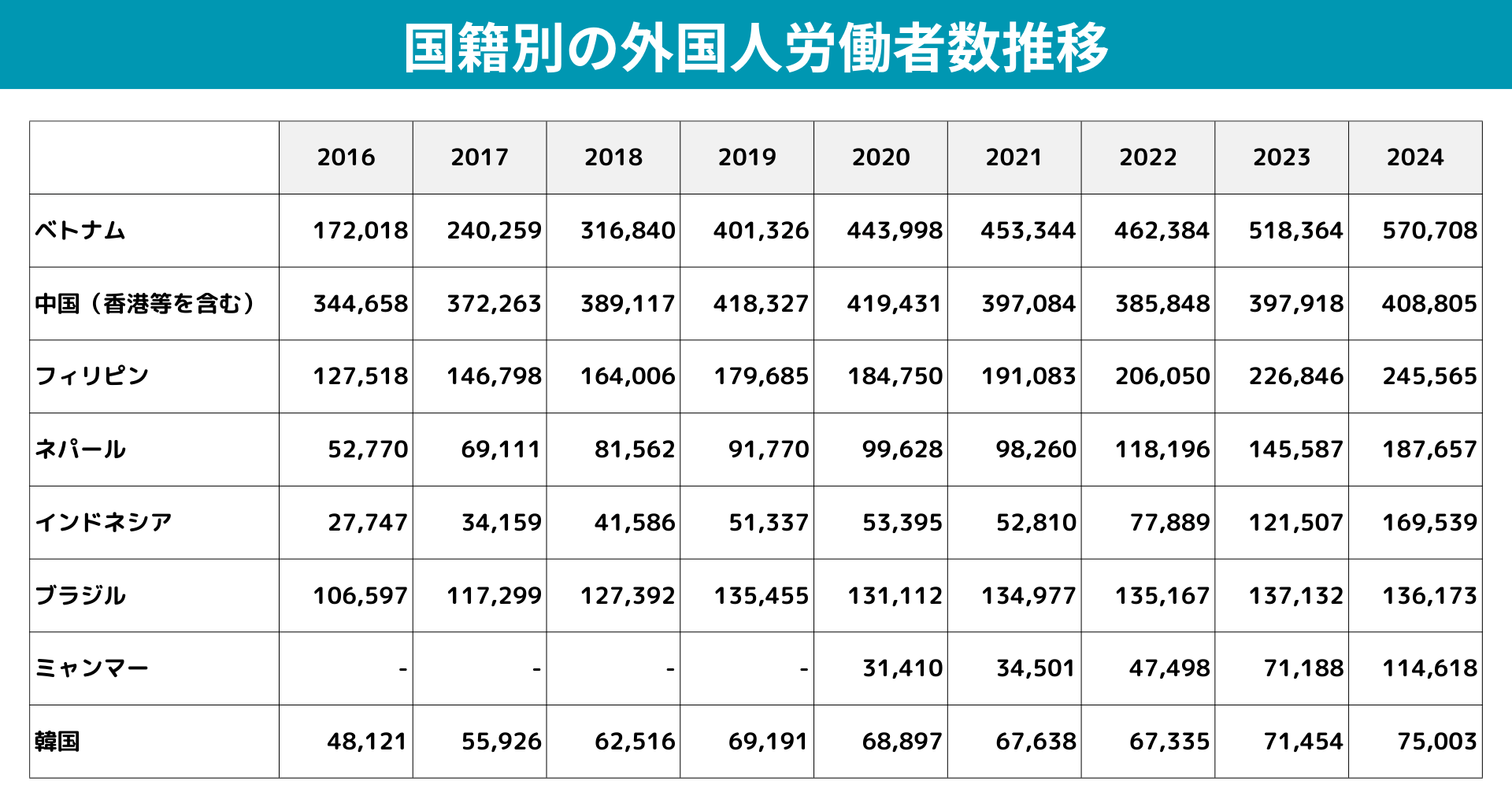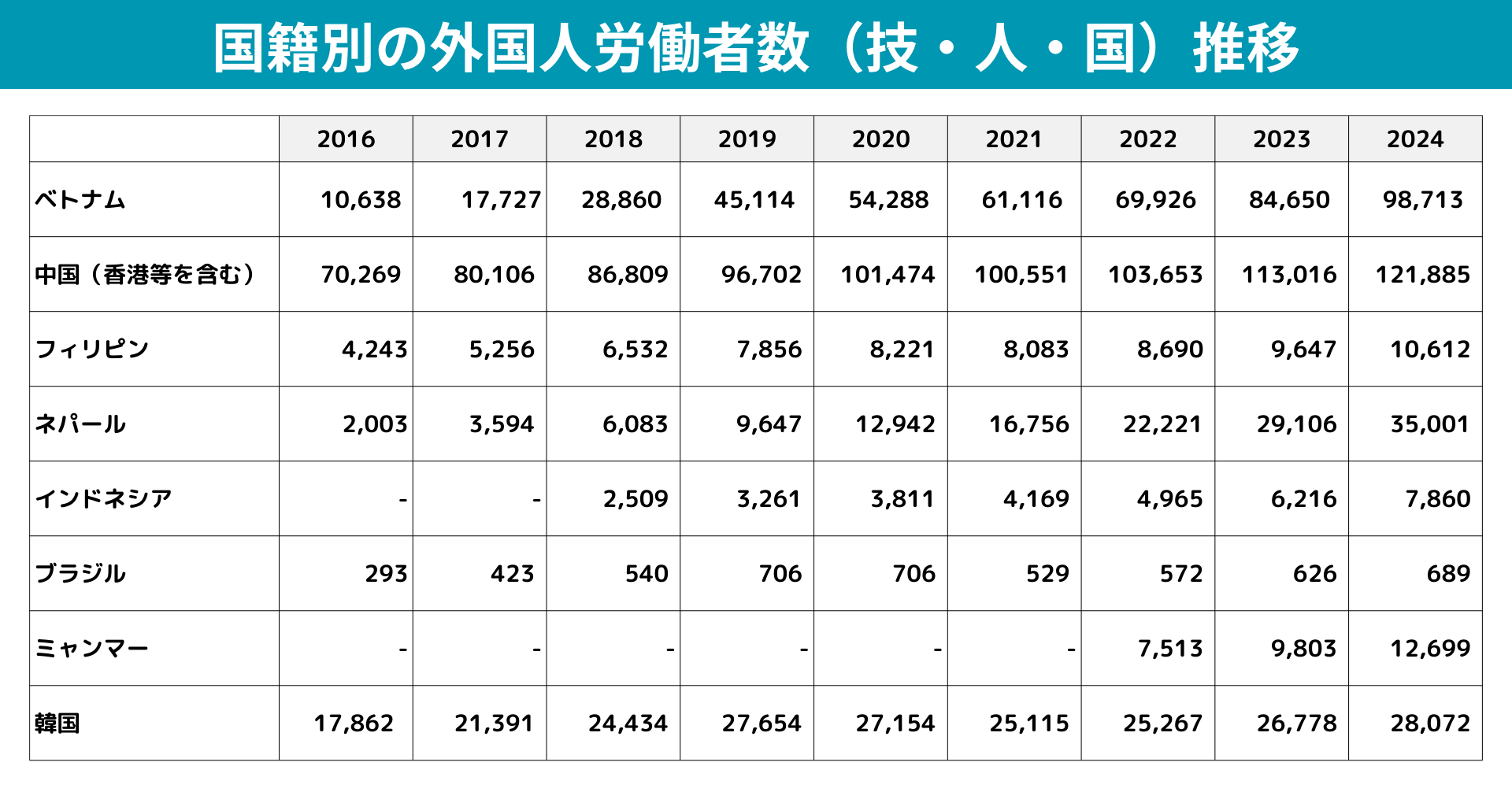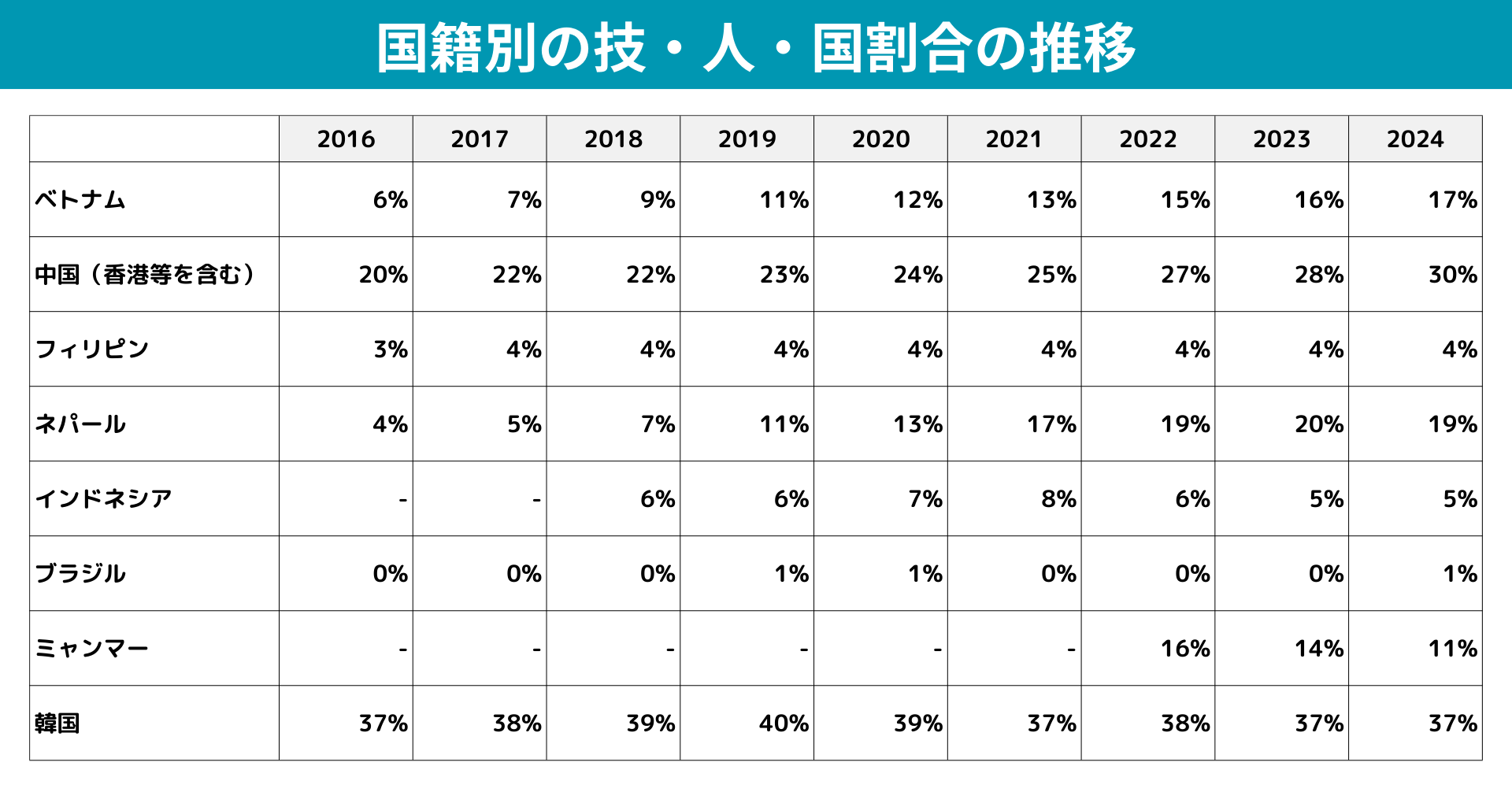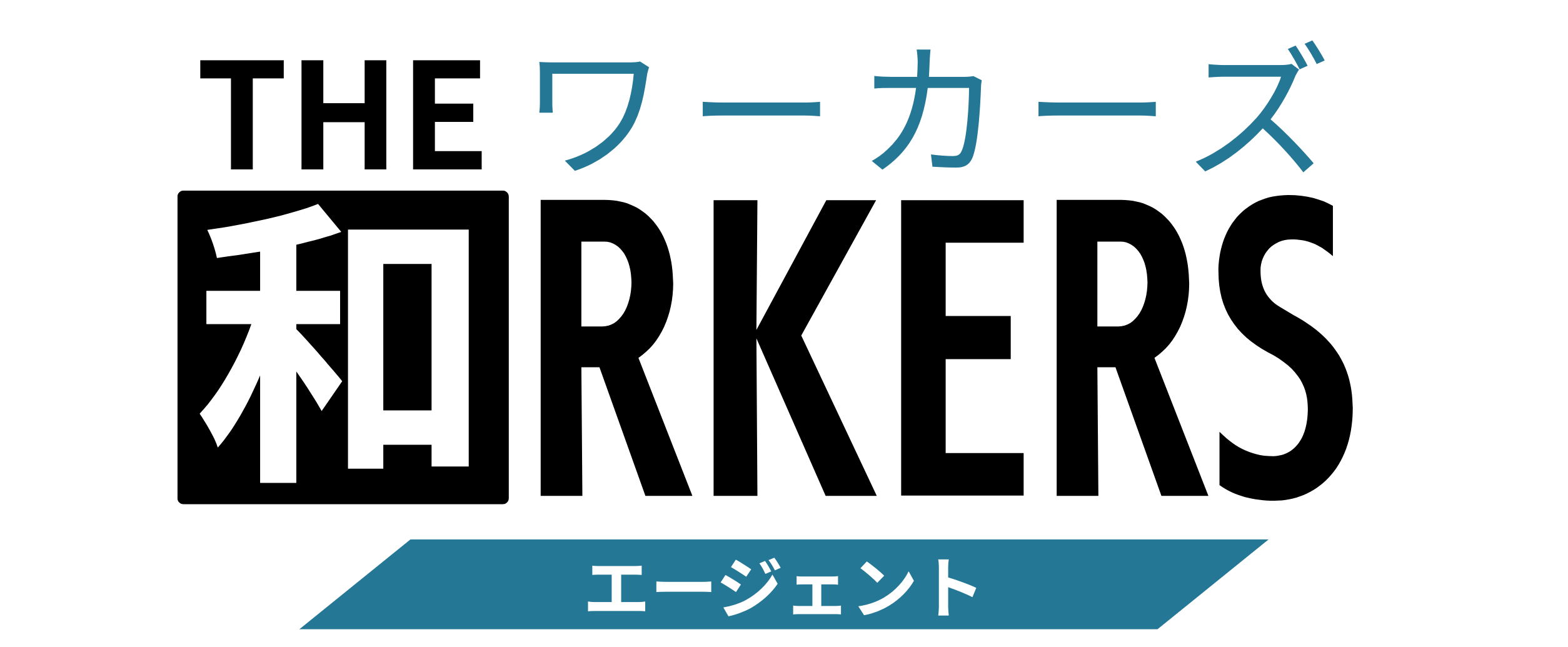Japan’s Foreign Workforce Hits Record High: What’s Driving the Surge?

Japan is experiencing unprecedented growth in its foreign workforce, with numbers more than doubling over the past decade. While Vietnamese and Chinese nationals make up the largest segments, workers from an increasingly diverse range of countries are contributing to Japan’s economy—not just in manual roles, but in highly skilled, white-collar positions. What’s behind this trend, and what does it mean for the future of work in Japan?
Reference:厚生労働省:「外国人雇用状況」の届出状況
Japan Hits Record High in Foreign Workers: A Closer Look at Nationality Trends
Japan continues to see a steady increase in the number of foreign workers, reaching record-high levels year after year.
In 2016, there were approximately 1.08 million foreign workers in Japan. By 2024, that number had more than doubled to around 2.3 million. Although growth slowed temporarily during the COVID-19 pandemic, it has since rebounded sharply.

As of 2024, Vietnamese nationals make up the largest portion of Japan’s foreign workforce, totaling approximately 570,000. They are followed by Chinese (including those from Hong Kong and Macau), Filipinos, and Nepalese. In recent years, the number of workers from Indonesia and Myanmar has also surged.

White-Collar Roles on the Rise: Surge in Technology/Specialist in Humanities/International Service visa
Foreign professionals are increasingly occupying white-collar positions in Japan, many of them under the “Engineer/Specialist in Humanities/International Services” visa category. The number of workers with this visa has grown significantly—from around 140,000 in 2016 to approximately 410,000 in 2024, representing a 2.7 to 2.8-fold increase.
This trend reflects growing demand for international talent in specialized fields such as IT engineering, marketing, legal, and sales.

By nationality, Chinese professionals top the list in this visa category, with approximately 120,000 in 2024, followed closely by Vietnamese workers at around 100,000.

Notably, among all Chinese foreign workers in Japan, the share holding this type of visa increased from 20% in 2016 to 30% in 2024.

What’s Driving This Growth?
Several factors are behind the rise in foreign workers in Japan:
- A Shrinking Domestic Workforce
With Japan’s working-age population (ages 15–64) steadily declining due to aging demographics, companies are turning to foreign talent to fill labor shortages. - Government Policies Supporting Foreign Talent
Japanese government initiatives have helped create a more structured and open framework for accepting foreign professionals. - Growing Demand for Highly Skilled Talent
In areas like IT and engineering, there’s a notable surge in demand for global talent to help strengthen Japan’s competitiveness in the international marketplace.
Looking Ahead: Toward a More Diverse and Skilled Foreign Workforce
The number of foreign workers in Japan is expected to continue increasing. Key trends to watch include:
- Expansion of “Highly Skilled” Roles
Foreign professionals will increasingly be expected to take on core roles in areas such as digital transformation (DX) and international business expansion. - Greater Presence in Regional Areas
While foreign workers have traditionally concentrated in urban centers, labor shortages in regional areas may lead to wider geographic distribution. - Accelerating Multinational Workforce
In addition to Vietnam, China, and the Philippines, we expect to see more workers coming from countries like India, Bangladesh, and Uzbekistan. - Stronger Employer Readiness
Companies will need to enhance their onboarding processes, cross-cultural management capabilities, and support systems to foster inclusive workplaces.
Considering a High-Level Career Move in Japan?
If you’re an international professional exploring high-level career opportunities in Japan, reach out to THE 和RKERS for expert support and guidance.




